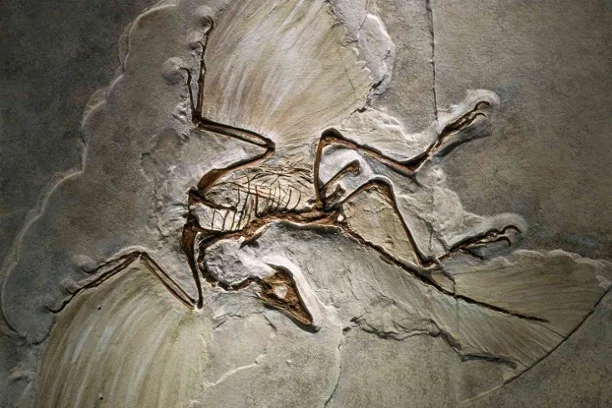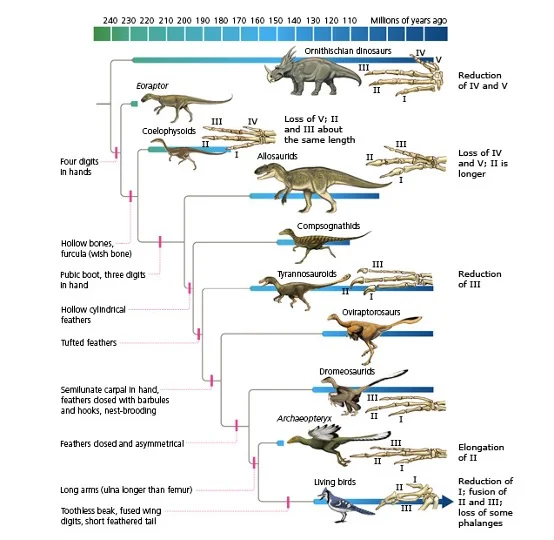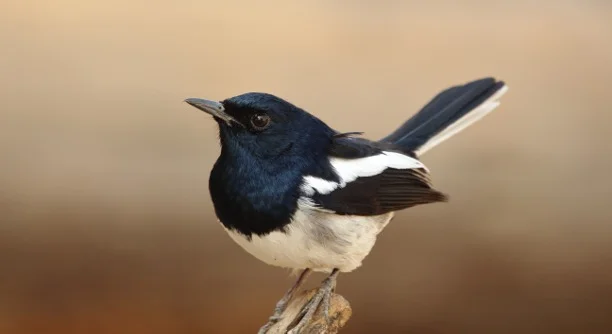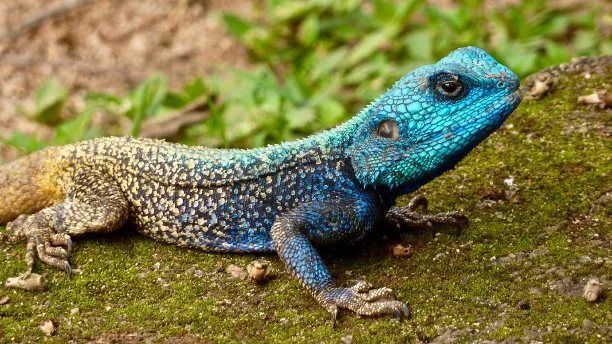Are Birds Reptiles?
No, birds are not reptiles. They belong to the class Aves and are a separate group of vertebrates distinct from reptiles.
Did Birds Evolve from Dinosaurs?
Yes, birds are considered to have evolved from small, feathered theropod dinosaurs. The evidence for this comes from the similarities in bone structure and anatomy between birds and certain groups of dinosaurs, as well as the discovery of feathered dinosaurs in the fossil record.
How did Birds Evolve?
Recently discovered fossils from China, South America, and other countries made it possible to find that birds evolved from small carnivorous dinosaurs of the Late Jurassic. The search for the ancestors of living birds began in the early 1860s with the discovery of a specimen of Archaeopteryx, the first known bird.

It had feathers on its arms and tail like birds, but unlike living birds, it also had teeth and a long bony tail. Furthermore, unlike living birds, the bones in Archaeopteryx’s hands, shoulder girdles, pelvis, and feet were not fused and reduced. Archaeopteryx was identified as a transitional species between birds and reptiles based on these characteristics.
Are Birds Technically Reptiles?
No, birds are not considered to be reptiles. Although they share a common ancestor with reptiles, birds have evolved a number of unique characteristics, such as feathers and the ability to fly, that distinguish them from reptiles. Birds belong to the class Aves, while reptiles belong to the class Reptilia.
How To Attract Cardinals To Your Yard
Birds vs Reptiles
Birds and reptiles are both classes of vertebrates, but they have distinct differences. Some of the main differences between birds and reptiles include:
1. Body Temperature: Birds are warm-blooded, or endothermic, while reptiles are cold-blooded, or ectothermic.
2. Metabolism: Birds have a higher metabolism than reptiles, which is necessary to power flight and maintain a constant internal body temperature.
3. Skin: Birds are covered in feathers, while reptiles have scaly skin.
4. Eggs: Reptiles lay their eggs on land, while birds can lay their eggs in a variety of locations, including in trees, on cliffs, and in nests.
5. Limbs: Most birds have two legs and wings, while reptiles have four legs and no wings with few exceptions.
6. Respiration: Birds have an advanced respiratory system that allows them to extract more oxygen from each breath and support the demands of flight, whereas reptiles have a more primitive respiratory system.
7. Behaviors: Many bird species incubate their eggs and care for their young, which is an unusual behavior among reptiles.
In summary, while birds and reptiles share some similarities, such as the presence of backbones and the ability to lay eggs, they have evolved distinct adaptations that set them apart from one another.
What are Birds?
Birds are a group of warm-blooded, feathered vertebrates that belong to the class Aves. Birds are a group of warm-blooded vertebrates constituting the class Aves, characterised by feathers, toothless beaked jaws, the laying of hard-shelled eggs, a high metabolic rate, a four-chambered heart, and a strong yet lightweight skeleton. Birds live worldwide and range in size from the 5.5 cm (2.2 in) bee hummingbird to the 2.8 m (9 ft 2 in) common ostrich.
Characteristic of Birds
The main characteristics of birds include:
1. Feathers: Birds are the only animals with feathers, which provide insulation and enable flight.
2. Beak: Birds have a beak instead of teeth, which is adapted for various functions such as eating, manipulating objects, and vocalizing.
3. Wings: Birds have wings that enable them to fly, and they are the only animals that have this ability. 4. Lightweight skeletons: Birds have lightweight skeletons that allow them to fly.
5. High Metabolism: Birds have a high metabolism, which is necessary to power their flight and maintain their body temperature.
6. Brooding: Many bird species incubate their eggs and care for their young, which is an unusual behavior among vertebrates.
7. Endothermic: Birds are warm-blooded, or endothermic, which means they maintain a constant internal body temperature.
8. Strong Respiratory System: Birds have a highly developed respiratory system that enables them to extract more oxygen from each breath and support the demands of flight.
9. Wide Distribution: Birds can be found all over the world, from the Arctic to the equator, and they occupy a wide range of habitats, from deserts to forests to oceans.
What are Reptiles?
Reptiles are a vertebrate group that includes snakes, lizards, turtles, alligators, and crocodiles. They are distinguished by scaly skin, the ability to lay eggs on land, and the presence of specific bones in their skulls and limbs. Most reptiles have a continuous layer of epidermal scales on their skin.
Reptile scales contain a distinct type of keratin known as beta keratin; the scales and interscalar skin also contain alpha keratin, which is shared by other vertebrates. Keratin is the primary structural component of reptilian scales.
Reptiles are cold-blooded, and many species have adaptations that aid in temperature regulation. They have been around for millions of years and can be found in a wide range of habitats worldwide.
Characteristic of Reptiles
The main characteristics of reptiles include:
1. Scaly Skin: reptiles are covered in scales that help to protect their bodies and retain moisture.
2. Cold-blooded: reptiles are ectothermic, meaning that they regulate their body temperature through external sources, such as the sun or air.
3. Egg-laying: reptiles lay their eggs on land, and the eggs are usually surrounded by a protective shell.
4. Skull and Limb Bones: reptiles have a distinct arrangement of bones in their skulls and limbs, which differentiates them from other classes of vertebrates.
5. Hinged Jaw: reptiles have a hinged jaw that enables them to open their mouth wide to swallow prey.
6. Lung Ventilation: reptiles have a unique method of lung ventilation that allows them to extract oxygen from the air they breathe.
7. Found in Many Habitats: reptiles can be found in a variety of habitats, including deserts, rainforests, and oceans, and can range in size from tiny chameleons to massive saltwater crocodiles.



